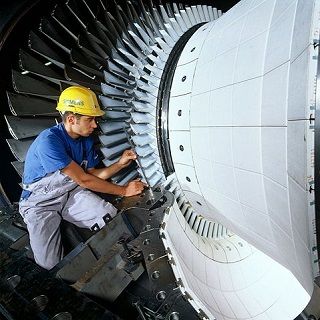NRG Energy CEO: Consumers of “Green” Power Soon Won’t Need a Grid Connection
Are the falling prices of natural gas “wiping out” coal and nuclear? That’s what David Crane, President and CEO of Fortune-300 sized NRG Energy told the audience at a Wall Street Journal conference recently. As if that didn’t astonish event attendees, Crane went on to describe the potential effects of distributed generation in the near future, saying:
All the natural gas industry needs is a gizmo in your house to convert natural gas into electricity. It could be a fuel cell, it could be a micro gas turbine…..If you have firm gas in your house and, say you want to be as green as possible, you [won’t] need to be connected to the grid at all.
Electricity customers making decisions based on being “green?” From your lips to God’s ears, as they say, Mr. Crane.
From a practical perspective, let’s hope your words serve as a wake-up call for the utilities. Let’s put it this way: If my customers were thinking in ways that would soon make me irrelevant, I’d be hard at work re-fashioning myself in such a way as to put a halt to that terrible process.
Your course is clear, folks: Your customers want clean energy. Go get it for them.


This system would ideally be used in combined heat and power mode – providing space heating and hot water particularly in the winter. If combined with a photovoltaic array, a suitable battery and solar water heating, a complete home energy solution can be achieved with very low total CO2 emissions.
The battery would be an important feature of the system if going off the electrical grid as momentary power consumption in a home can go up to perhaps 10 kW and can drop below 100 W whereas the capacity of a domestic natural gas powered generator is likely to be around 1 to 1.5 kW. The battery acts as the swing producer storing excess when power consumption is low and giving it back when demand is high.
On grid, the system would also have its uses as it would do several things.
1. Permit the house to run in “islanded mode” during a power cut.
2. Reduce the load on power lines by damping peaks and troughs in demand – in some cases deferring or avoiding the need to invest in a power line upgrade.
3. Collectively form a substantial source of spinning reserve – suppose you have 1,000,000 homes each with a 10 kWh battery capable of delivering 10 kW for an hour or brief bursts of high power e.g 40 kW for 5 minutes or 100 kW for 1 minute then you can theoretically have access to up to 100 MW for 1 minute for frequency control as other generators ramp up, 40 MW for 5 minutes, or perhaps 5 MW for an hour (most of the batteries will not be fully charged). This can form a useful contribution to the stability of the power grid reducing the risk of power outages and facilitating the inclusion of higher concentrations of renewable energy. This could be supplemented by the generating power of the collective home natural gas generators (efficiency need not be compromised as hot water can be stored for later)
4. Provide a contribution to peak shaving as battery equipped homes run off battery at peak hours – reducing the need to run expensive peaking plants.